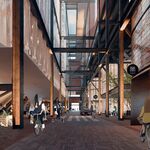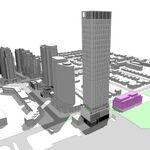"deserves better"
Those statements and the thinking behind them really helped speed up the Relief Line and whatever Scarborough will get for sure. /s
The article you linked even used the 130-year-old Chicago L as an example of how it could look like, which is a bad example. Give me a break.
Changing a plan from elevated to underground is no small change. and it can increase the costs of that segment two-fold. The REM de l’Est is already much more expensive per kilometre than the first REM. Tunnelling the downtown segment will make it even more expensive than the Blue Line Extention.
Elevating rail in urban areas is not the end of the world. We literally have Vancouver showing everyone how it's done. Even Cities like Melbourne are finding ways to turn
heavy rail tracks airy with community spaces under it. This example isn't the most artistic but it shows how the project can add to the community and not destroy it like pundits are howling.
View attachment 292174
Or you can see how one station and surrounding track at the
Hague was designed as an Instagram worthy landmark.
View attachment 292178
View attachment 292182
or how Riyadh's Metro simply covers up the concrete with rounded panels and lights them to the lines' color, creating a cool ambience and line identity.
View attachment 292184View attachment 292183
Or you can see how even the simplest things can make a big difference. In Dubai, the concrete base is flat and painted white with columns that have a small flourish. Makes it very easy on the eyes.
View attachment 292217
Heck, even Paris has a line almost as old as the Chicago L
running next to the Eiffel Tower and nobody finds it's ugly. It has stations and trains much longer than what is planned for the Rem de l'Est
View attachment 292173
The space under the Line 6 metro line is a bike lane with trees around it.
View attachment 292175
What the REM de l'Est needs is not an underground alignment. What it needs is a strong artistic identity and a good plan to contribute to the public realm around the tracks and stations.
They already know this and have clearly stated in all their documents that they plan on making sure it does that. What the media needs to do is make sure they actually follow through on that.




